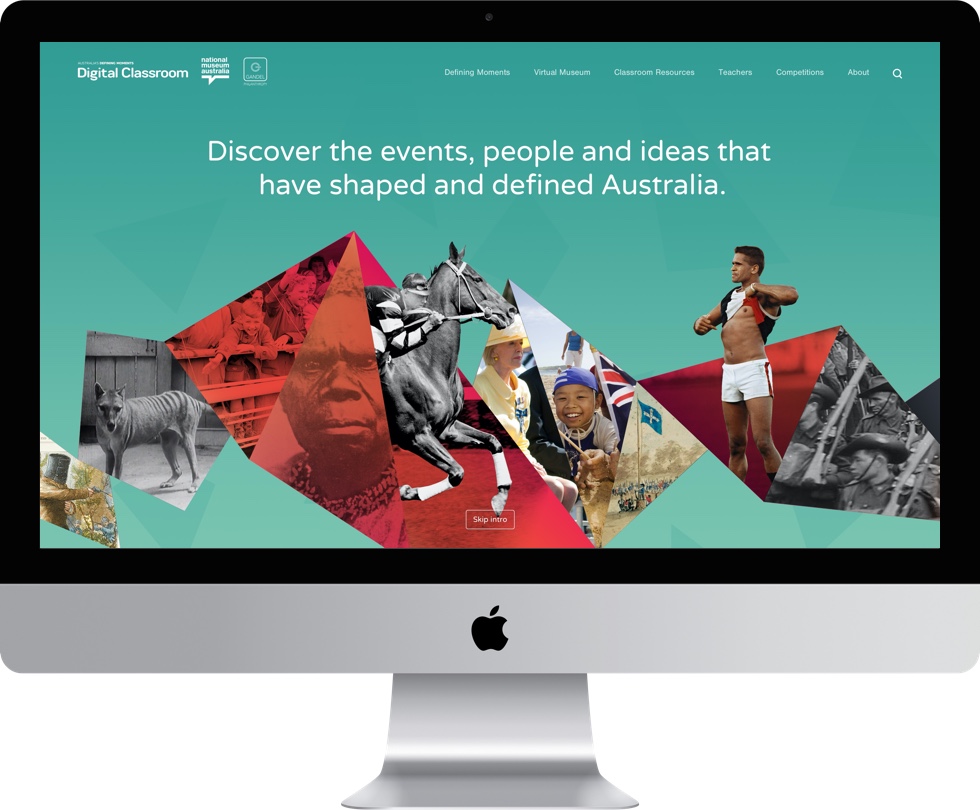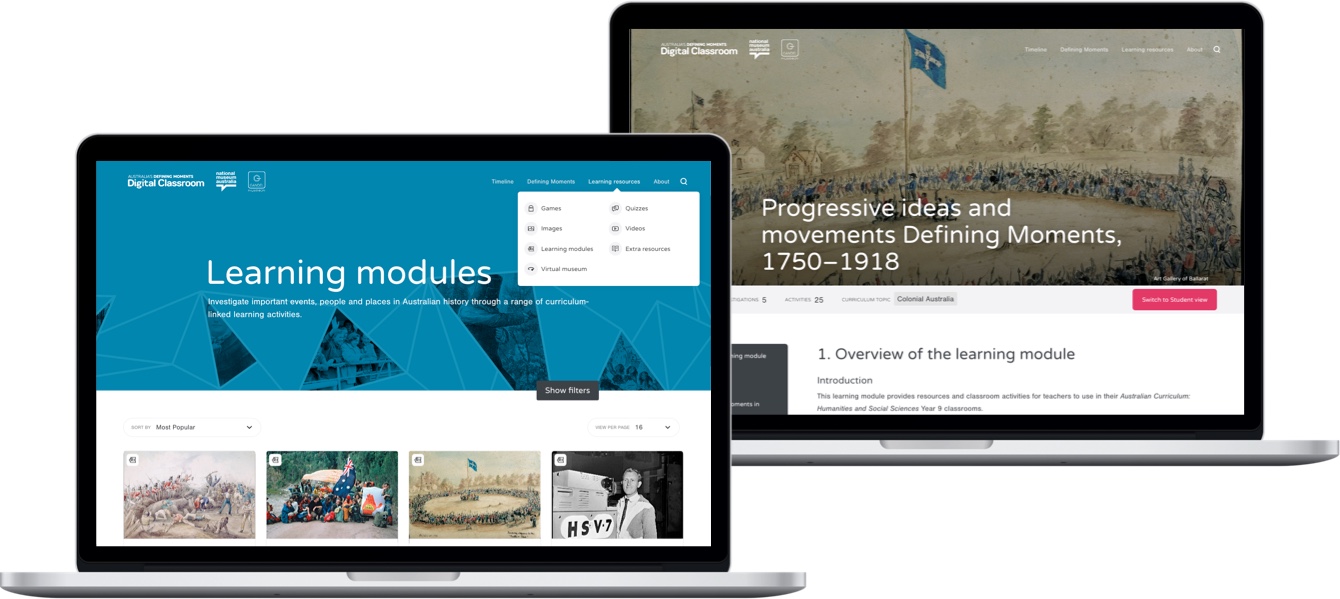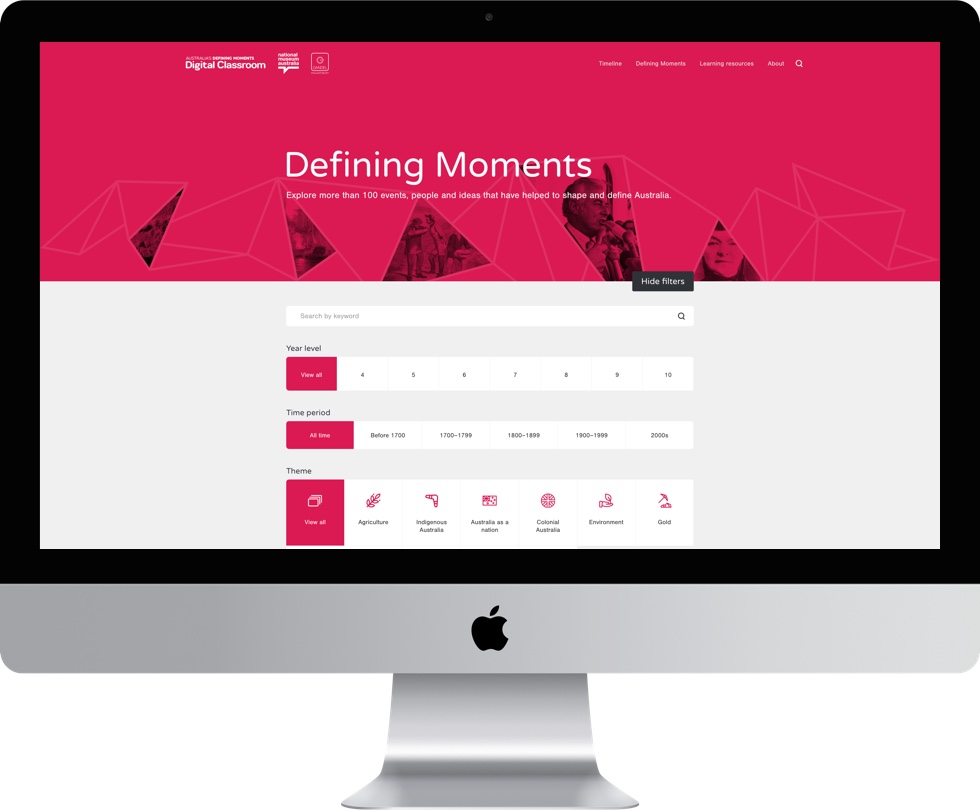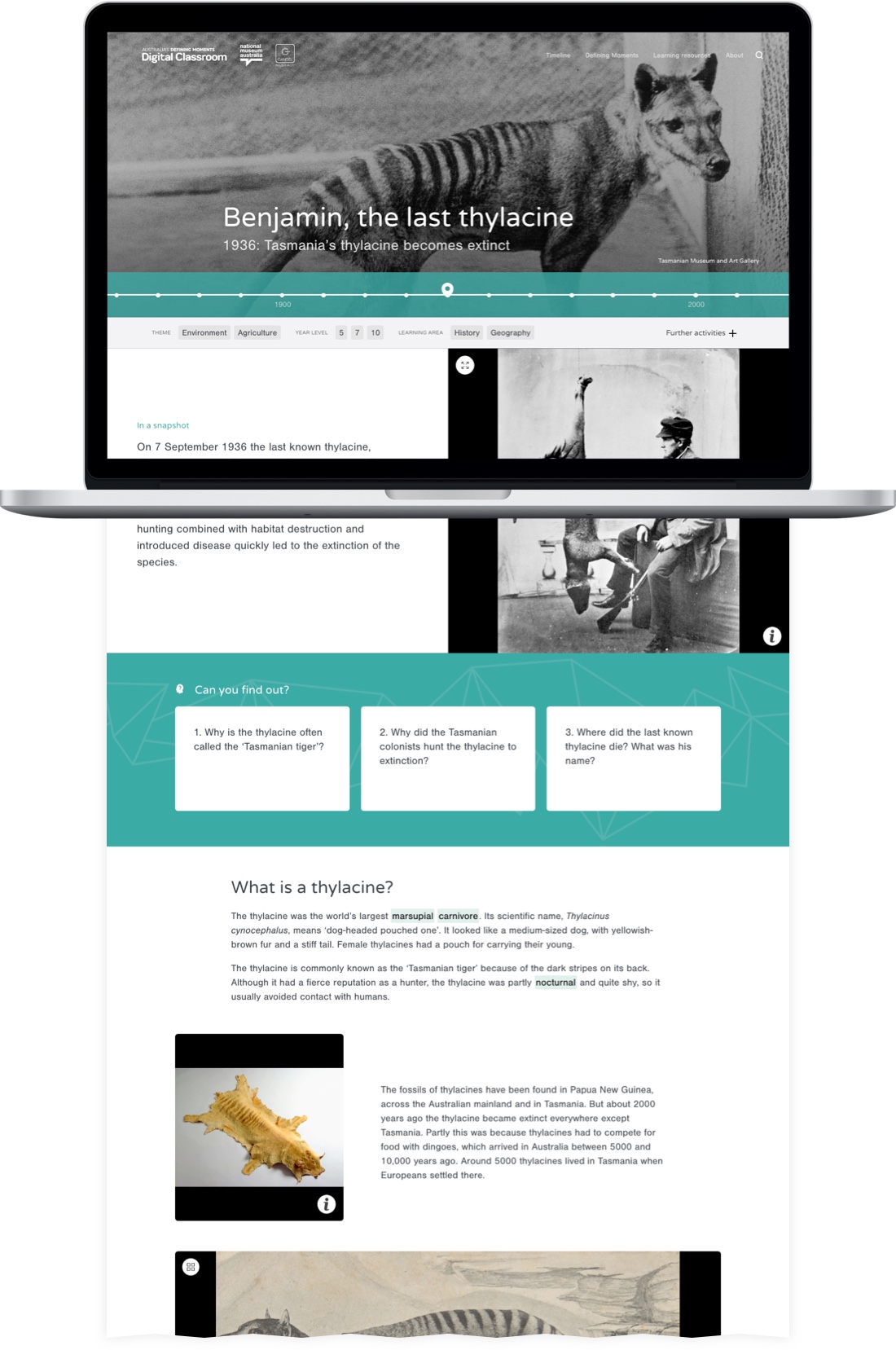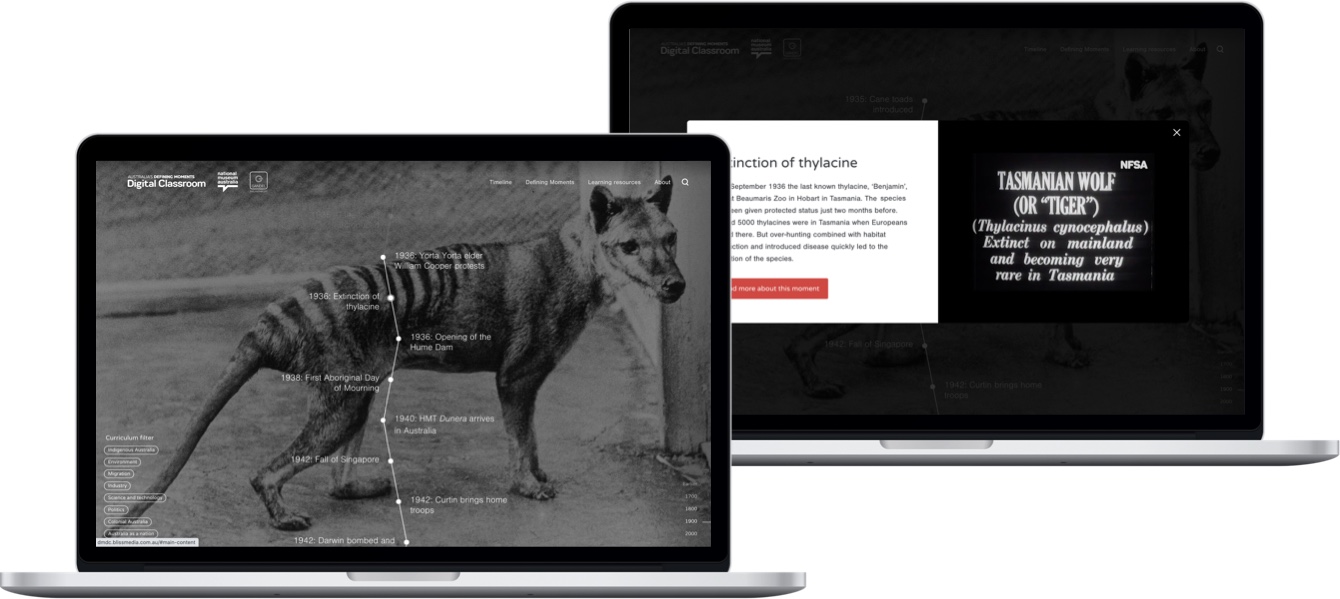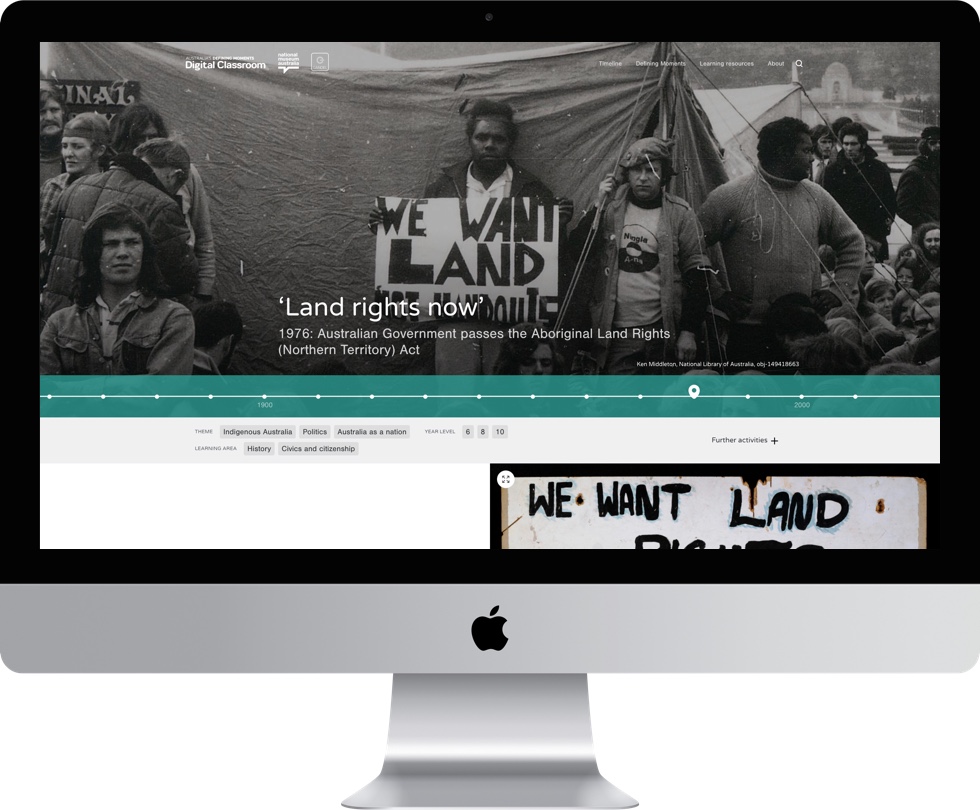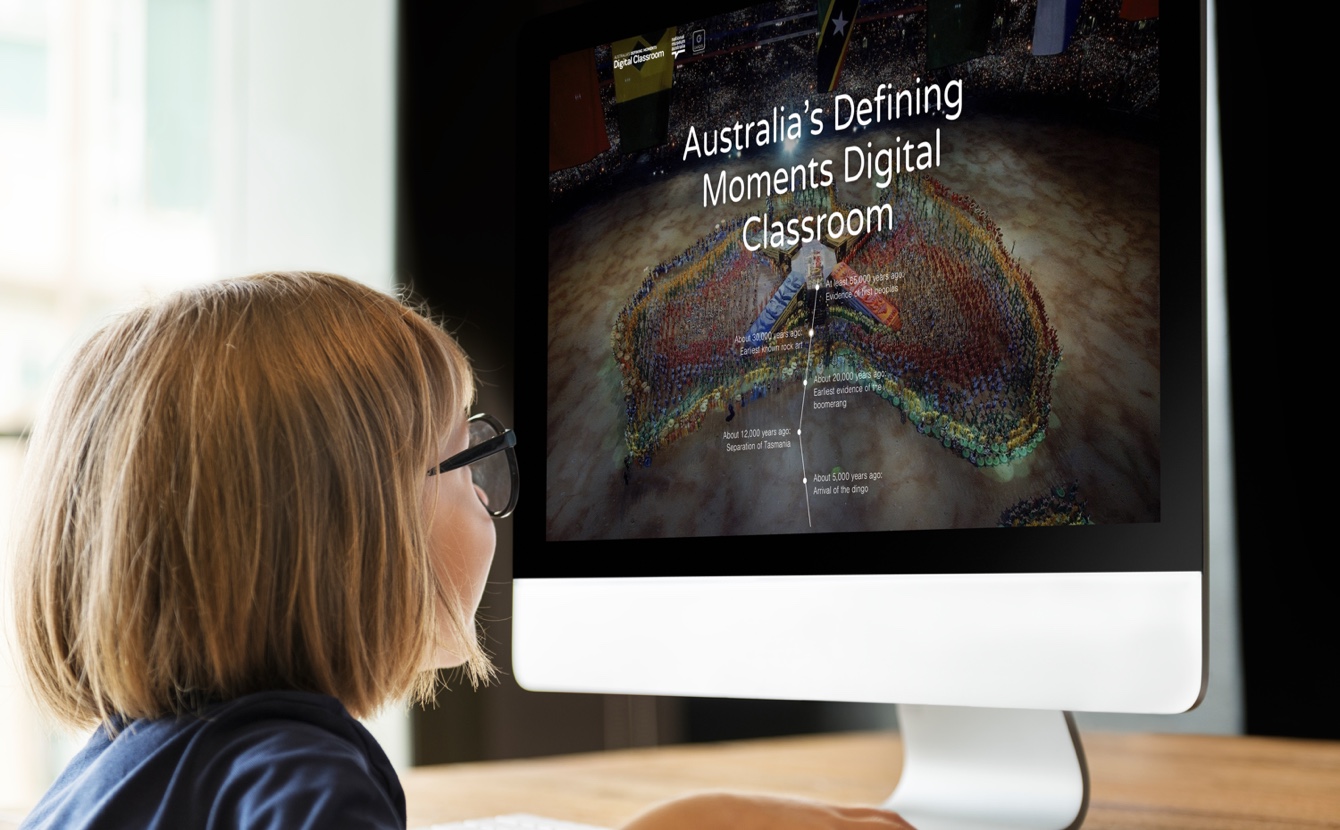
Defining Moments Digital Classroom (DMDC) is a major web design and development project for the National Museum Australia. It is an online learning website on Drupal 8 (GovCMS PaaS) that will be used by primary and secondary schools nationwide; empowering teachers and inspiring young people across a broad range of curriculum that supports the Museum’s focus on telling the stories of all Australians, and its commitment to the history and cultures of First Australians.
The National Museum of Australia’s DMDC website is developed by our team in Drupal 8 on the GovCMS PaaS Platform.
This was a large scale project consisting of:
- Over 40 re-usable web template types
- Over 100 interactive learning modules
- Powerful site search functionality with auto-suggestion and filtering
- A highly visual interactive timeline with filtering and taxonomy
- Searchable media library of videos, audio, documents and images
- Interactive quizzes and online games
The principal audience for the website will be school teachers (including student teachers), and school students (including primary school-aged students Years 5-6 and secondary school-aged students aged Years 7-10). The DMDC website will be a futuristic learning experience that contains a range of teaching and learning-related interactive experiences and content for teachers and students.
In the discovery phase, our design team immersed themselves in user research to understand how teachers and students will best use the website. We involved students, teachers (high school and primary school) and parents, and key educational stakeholders. We dove deeply into their frustrations and uncovered many opportunities through a series of focus groups, surveys and interviews. We discovered that the audience placed a premium on design and technology and that the DMDC website needed a modern, mobile-responsive and innovative user-experience to engage them.
It was critical that both ‘time poor’ students and teachers are able to quickly locate the information they are looking for on the site. This was an Information Architecture challenge that our design team relished. We solved the challenge through crafting clear site structure, navigation and a powerful search that enables users to preview results (through autosuggestions) and find content using filters by subject area, year-level and resource type.
Content strategy was also a significant part of the project. Essentially, the DMDC website is a large repository of rich content in the form of educational articles, images, videos, interactive quizzes, games and learning modules. Our experience allowed us to give practical recommendations on how to make the existing content more meaningful to their audience.
The museum wanted to present the content in a way that will spark a student’s sense of curiosity to explore different aspects of Australian history. As a result, we made content discovery form a key part of the web site’s interface, with widgets and related links using common taxonomies to take users to connected content both within the website and across other Museum channels.
The National Museum of Australia prides itself for using a variety of digital approaches and channels to enable greater student and school engagement. We reproduced some of these experiences on the DMDC website.
The interactive timeline on the homepage is an adaptation of the Defining Moments in Australian History interactive touchscreen wall installation. The timeline showcases approximately 100 featured defining moments, and allows the user to scroll through the timeline and see images and content relating to that Defining Moment.
For such a large scale project, our team invested a considerable amount of time in the discovery phase - analysing and understanding the technical requirements. Our Acquia certified Drupal Grandmasters (Technical Architects) performed analysis on how best to architect the Drupal solution (including CMS configuration, admin workflows, content blocks, headless API integration, security and hosting) to meet DMDC’s functional requirements. We documented our solution in a Technical and Functional Specification Report for the purpose of ensuring we were on the same page with our understanding of the project requirements prior to development.
The most complex technical challenge of the DMDC project was that we needed to create over 100 interactive learning modules from the ground up. We ended up coming up with the solution of creating a library of 12 unique interactive learning components using React JS, including questionnaires, card flipping, drag-and-drop images, multiple-choice questions and others. These components were reusable and could be easily combined in different ways to create over 100 learning modules on the website. We also designed a JSON layer to store the application data, which then integrates with the Headless Drupal backend layer via REST API.
The DMDC website truly represents a landmark achievement, setting a new benchmark for online learning platforms for Australian schools. It has been a very rewarding process for both the National Museum and our team; one inspired by an innovative and collaborative spirit.
Launch website: digital-classroom.nma.gov.au
Canberra Times Article - October 21, 2020
In June 2021, the DMDC was awarded by MAPDA for the best E-Learning site https://lnkd.in/ddkDyfe; and was highly commended in the MAGNA awards. It's great to receive recognition for a project we're so proud to have been a part of, and it's a credit to all involved.
